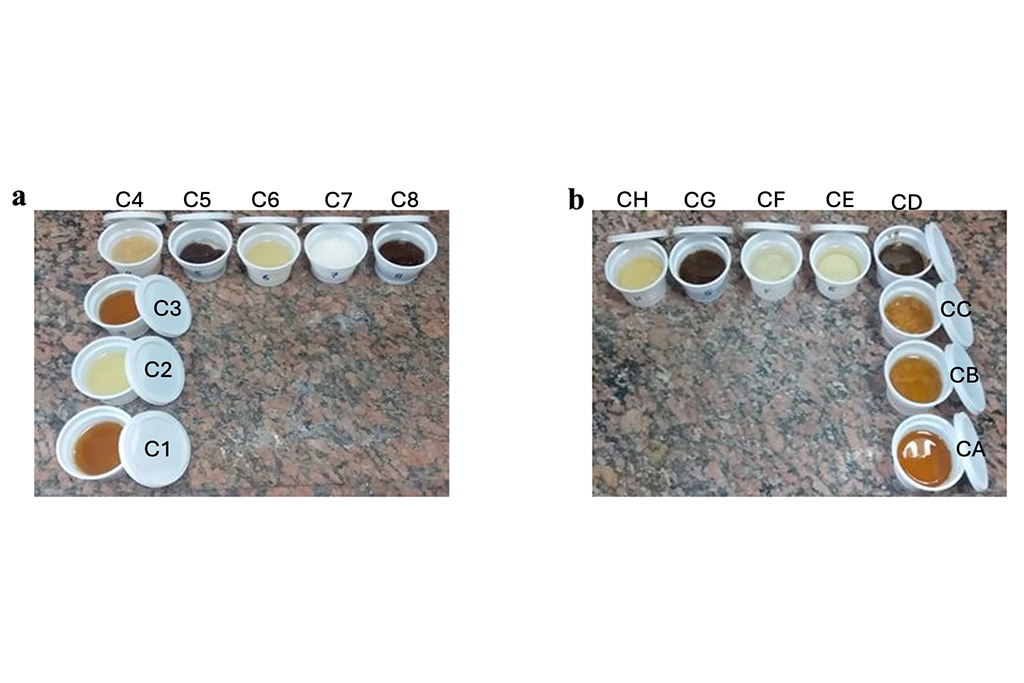Honey-Based Creams Target Biofilms and Advance Infection Control

Enhanced Antimicrobial and Antibiofilm Efficacy of Honey-Based Formulations
Honey has long been recognized for its antimicrobial properties, attributed to components such as polyphenols and biodefense proteins. Among honey types, Manuka honey (rich in methylglyoxal) and citrus honey (abundant in flavonoids and bioactive enzymes) exhibit potent antimicrobial activity.
Study Objective
This study aims to enhance the antimicrobial and antibiofilm efficacy of Manuka and citrus honey by incorporating natural additives — aloe vera, Indian costus, and mint essential oil — into cream formulations.
Two emulsion types were prepared and optimized using sonication:
- Aerosil fumed silica-based
- Arabic gum-based
Antimicrobial Activity
The antimicrobial activity of these formulations was tested against several pathogenic bacteria, including:
- Bacillus cereus
- Pseudomonas aeruginosa
- Salmonella enterica subsp. enterica serovar Typhimurium
- Methicillin-resistant Staphylococcus aureus (MRSA)
- Listeria monocytogenes
- Micrococcus luteus
- Escherichia coli O157:H7
- Klebsiella pneumoniae
and fungi such as Candida albicans and Aspergillus niger.
Inhibition zones:
- 28 mm against B. cereus
- 24 mm against S. Typhimurium
Antibiofilm Activity
Antibiofilm activity was evaluated using a 3D biofilm model. Formulations containing:
- Citrus honey + Indian costus → biofilm reduction of 44.39%
- Manuka honey + Aloe vera → biofilm reduction of 21.33%
against P. aeruginosa and MRSA.
Chemical Composition Analysis
The composition of citrus honey was analyzed using gas chromatography–mass spectrometry (GC–MS) to identify the volatile and non-volatile compounds contributing to antimicrobial properties.
Conclusion
These findings suggest that honey-based formulations enhanced with natural additives hold significant potential for combating biofilm-associated infections.
Antimicrobial Resistance and Honey-Based Strategies
Antimicrobial resistance (AMR) poses a significant clinical challenge, responsible for an estimated 700,000 deaths annually worldwide due to drug-resistant infections1. This number is expected to rise dramatically in the coming years. Most bacteria have developed resistance toward commercially available antibiotics due to the misuse of antibiotics2.
A systematic analysis of the Global Burden of Disease Study revealed that in 2019, 33 bacterial pathogens were associated with significant global mortality, highlighting the urgent need for innovative antimicrobial strategies3.
Biofilm-Associated Infections
Bacteria predominantly exist in their natural habitats in the form of biofilms to withstand extreme conditions4. Biofilms, which are groups of cells attached together and encased in protective extracellular matrices, are a major contributor to chronic wound infections5. These structures shield bacteria from the immune system and antibiotic treatments, allowing infections to persist and become resistant to therapies.
Chronic wounds, such as diabetic foot ulcers and pressure sores, are often the result of biofilm formation, making effective treatments for these infections essential6.
Research into alternative natural antimicrobial agents and effective delivery systems is crucial for combating multidrug-resistant pathogens.
Therapeutic Potential of Honey
Honey has long been recognized for its therapeutic potential and remains a vital natural remedy for various diseases7. Its antimicrobial properties are primarily due to components such as methylglyoxal (MGO), polyphenols, and bee defensin-18.
Manuka Honey
Manuka honey exhibits remarkable antimicrobial effects due to its high content of methylglyoxal, pinobanksin, and glyoxal, making it particularly effective in wound care and microbial infection control9.
Its low pH (3.5–4.5) enhances bactericidal properties by stimulating macrophage activity, reducing protease action, and promoting oxygenation in chronic wounds10.
Manuka honey is especially effective against biofilm-associated pathogens such as:
- Staphylococcus aureus
- Streptococcus pyogenes
- Proteus mirabilis
- Enterobacter cloacae
- Pseudomonas aeruginosa
- Listeria monocytogenes
- Escherichia coli
Its unique antimicrobial profile is largely attributed to its non-peroxide activity, driven by methylglyoxal8–10.
Citrus Honey
Citrus honey, derived from the nectar of citrus blossoms, contains flavonoids, polyphenols, hydrogen peroxide11, and volatile compounds such as limonene and pinene12. These components contribute to its antimicrobial and antioxidant properties.
Although its lower MGO content makes it less potent than Manuka honey, its phenolic compounds and volatile oils provide a broader antioxidant and mild antimicrobial profile13.
Previous studies have shown that citrus honey inhibits bacterial pathogens including S. aureus, E. coli, P. aeruginosa, and Klebsiella pneumoniae14.
Natural Additives with Antimicrobial Properties
Several natural plant-based compounds exhibit strong antimicrobial and antioxidant effects, such as:
- Aloe vera – antibacterial, anti-inflammatory, and immunomodulatory properties effective against K. pneumoniae, S. aureus, P. aeruginosa, and E. coli18,19.
- Indian costus (Saussurea costus) – broad-spectrum antimicrobial activities, a promising natural alternative to synthetic preservatives20–22.
- Mint essential oil – antimicrobial, antiviral, and antifungal properties widely used in pharmaceutical and cosmetic industries23.
- Arabic gum – exhibits antimicrobial activity due to its high polysaccharide content, inhibiting bacterial and fungal growth24.
Innovative Therapeutic Strategies
Recent advancements have proposed innovative strategies targeting intracellular multidrug-resistant bacteria, emphasizing the potential of combining novel delivery systems with natural antimicrobial agents25.
Study Aim
The current study aims to develop various therapeutic cream formulations incorporating both Manuka and citrus honey, enhanced with natural compound additives. These formulations were evaluated for their antimicrobial efficacy against a range of pathogenic microorganisms.
Additionally, the study assessed antibiofilm activity against mature biofilms formed by common skin pathogens using a 3D-biofilm model to simulate in vivo conditions, focusing on biofilms associated with chronic wounds.
Furthermore, the composition of citrus honey was analyzed using gas chromatography–mass spectrometry (GC–MS) to identify volatile and non-volatile compounds responsible for antimicrobial and antibiofilm properties.
Read the full article in scientific reports
Discussion (0)